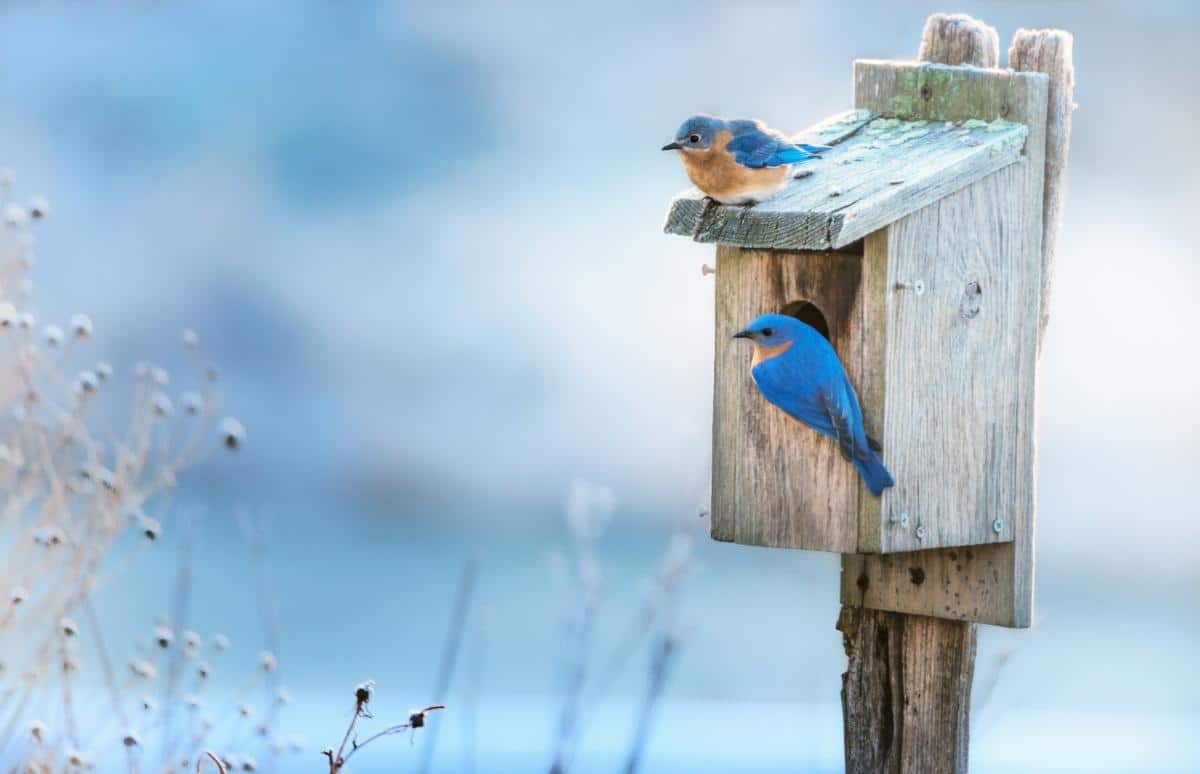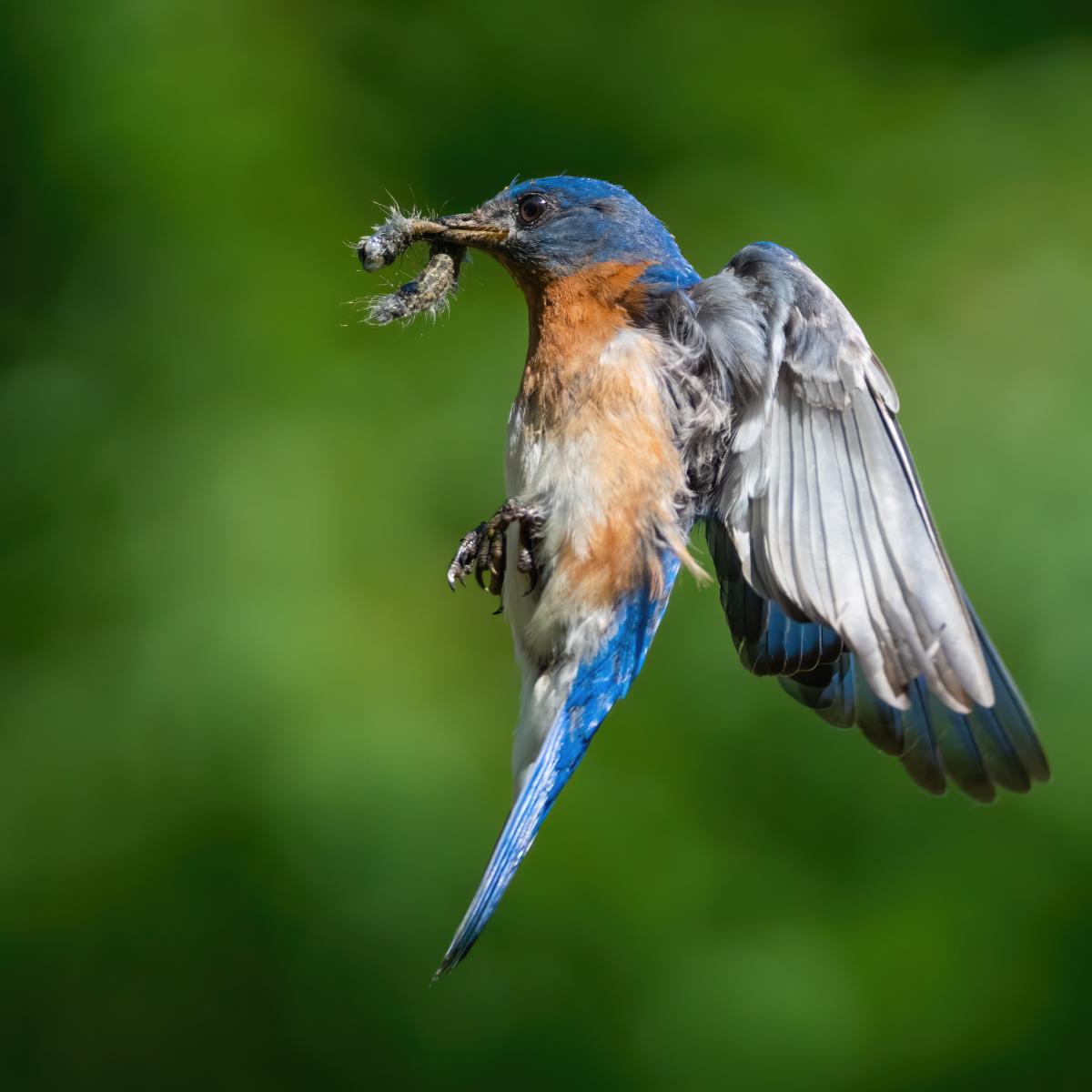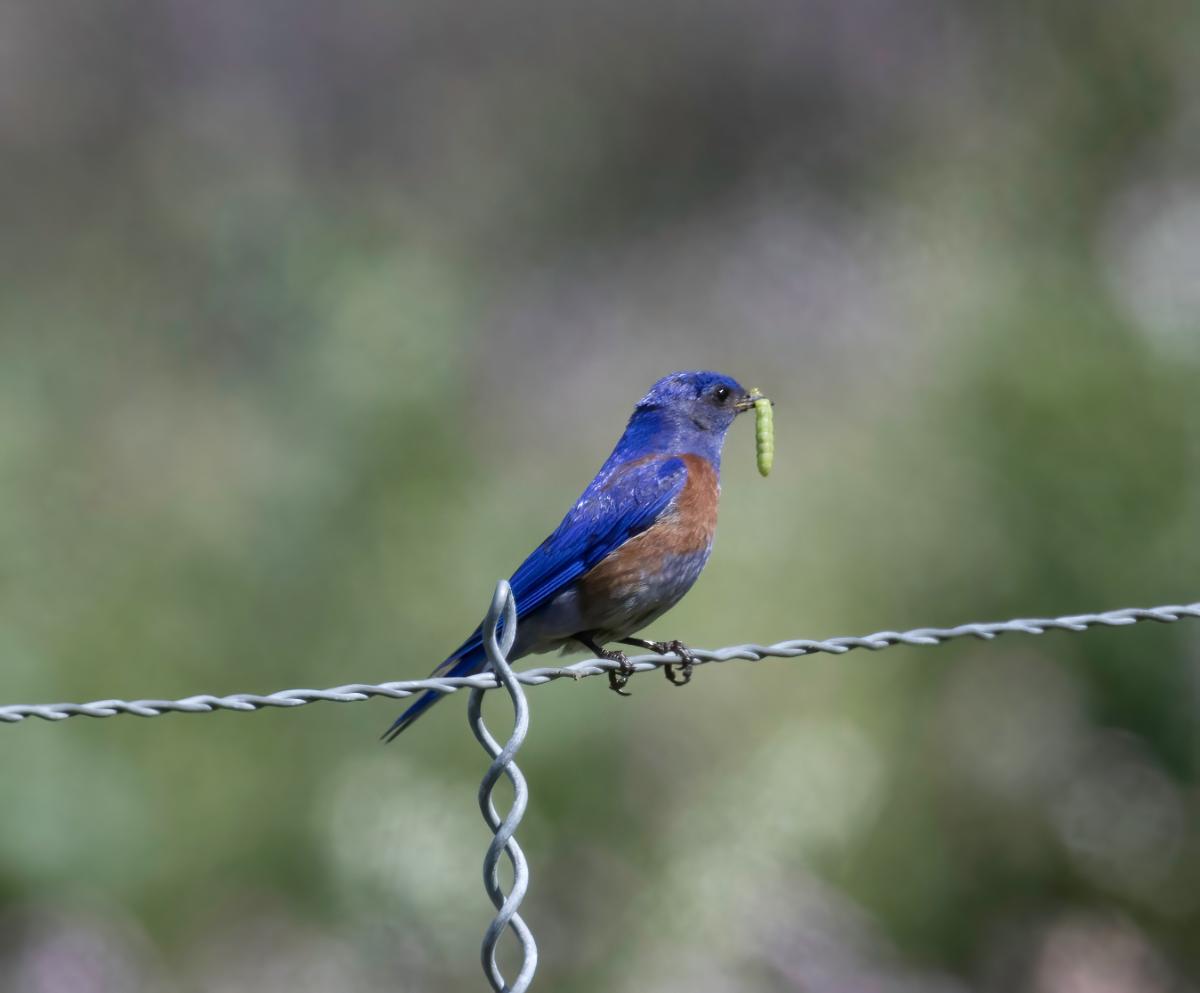“…A farmer’s (and gardener’s) best friend!”
— That is what the Cedar Run Wildlife Refuge calls bluebirds.
What is it about these colorful little birds that is so good for your yard and garden? Why might you want to extend the invitation for them to make your home theirs?
Bluebirds — Help Them Help You
Bluebirds have been a focus of support and conservation efforts in many parts of North America.
The birds, native to the U.S., down to Mexico, and Northward to Canada and Newfoundland, have been pressured by European starlings and house sparrows, which compete for housing and food. Increased pesticide use and loss of habitat are responsible for their decline, too.
Both the Western and Eastern bluebird populations have been impacted by these and other factors.
There is good news for these pretty little birds, though. Numbers have rebounded, thanks in large part to conservation groups but also thanks to home gardeners, farmers, and growers who see the birds for what they’re really worth.
That’s good news for bluebirds, and good news for those of us who want to capitalize on their increased populations – in a way that is mutually beneficial and supporting of the future of bluebirds.
Gardener’s Little Helper: What the Little Bluebird Can Do for You
Bluebirds are beneficial primarily as natural pest managers. Several other top priorities stem from that benefit, too.
Here are some of the ways bluebirds help farmers and gardeners — and all of us:
1. Natural Pest Control and IPM.
Bluebirds can be utilized as natural pest controllers and are effective as part of Integrated Pest Management (IPM) programs. They are known to be effective controllers of damaging insects in home gardens, yards, and on a larger scale in commercial agriculture, protecting important crops.
2. They’re excellent pest control for yards and gardens.
The most notable contribution bluebirds provide is pest control. And they do so on a serious level. Bluebirds eat primarily proteins in the spring and summer months when they are breeding and raising young.
For most of the year, their diet is 70% insects.
These include things like beetles, ants, grasshoppers, mosquitoes, moths, caterpillars, spiders, flies, grubs, corn worms, apple maggots, borers including corn borers, and many types of pest larvae. (It should be noted that they will feed on some desirable insects, too, like dragonflies and butterflies, though probably on a more limited basis because they do most of their hunting and eating on the ground and surfaces).
3. They protect important food sources both for home growers as well as market gardeners and large-scale producers.
The University of California at Berkeley is studying blue birds as pest control in grape vineyards and says that their presence and population support in farms and vineyards can easily spread to home gardens and smaller growers.
4. They cause limited loss for garden vegetable and fruit crops.
While it is true that bluebirds eat some berries and small fruits, their impact on crops may be less than you’d expect. The reasons for this are timing and diet.
During the warm months, when most of us are growing gardens, fruits, and berries, bluebirds are raising their young (two to three broods per year). At this time, their dietary needs are mostly protein sources – worms, grubs, and insects.
Protein is essential for brooding adults and fledgling baby birds. They only shift to eating mostly berries in the winter months, and that is because there are not many insects to eat once the bugs and pests go dormant.
Their preference is mostly for native berries that ripen, sweeten, and stay on the branch in the winter – winterberries and holly, for example.
Bluebirds eat mostly berries and small fruits, so large fruit crops and vegetables are not usually harmed by bluebirds. If you are concerned about a certain berry or small fruit crop, you can deter the birds from that one crop with harmless deterrents like scare kites or by using bird netting.
5. Bluebirds target pests in different areas.
Bluebirds really make their way around fields, yards, and gardens. They don’t just help with one type of insect pest, and they don’t just eat them from a lone source (like only eating insects on trees like a woodpecker does). They help all over the place.
For example, instead of just eating insects that are airborne like starlings and other birds do, bluebirds like to perch and find their prey. They forage for insect pests on the ground, on trees, leaves (including leaf litter on the ground), and on vegetable plants, as well as catching insects in flight (though most of their foraging happens on plants and on the ground).
This means that they are capable of removing insect pests from your plants – not just those that happen to get scared up and away, which is what a lot of birds do. That’s helpful, but it doesn’t help control insect larvae and it doesn’t do anything for pests that don’t fly.
6. Bluebirds reduce garden diseases.
Disease in the garden is often spread by traveling insects and pests. By reducing pest populations, the happy little birds are also reducing the spread of garden and plant diseases.
7. They can reduce pesticide use and human chemical exposure.
The more bad bugs that are eaten by good birds like bluebirds, the less crop damage there is, and therefore less pesticide needs to be used.
Farmers and others – certainly home gardeners – are encouraged to consider their cost-benefit analysis to determine if they are not better off financially by assuming some crop damage or loss in exchange for overall crop protection. This works the same way for home gardeners on a small scale, too!
8. They make people happy!
Okay, they’re not the only birds that do this, but bluebirds are said to symbolize happiness, hope, renewal, love, and positivity. They find their way into our songs as we enjoy theirs.
The University of California Extension Service reports that recent scientific studies show hearing and seeing birds makes people happy. With their bright blue and rust-coloring, bluebirds are a favorite for sure.
Your Support Helps Bluebirds All Over
Your support of bluebird populations ensures their success and helps to maintain populations so that they are around not only for your yard and garden but for others and for commercial growers, too. The more we support them, the more we have, and the more good they can do.
There are many groups working to protect and increase bluebird populations. Many of the U.S. states have state chapters of Bluebird Societies. (For example, there is a Michigan Bluebird Society, a South Carolina Bluebird Society, and basically one in every state.) The Audubon Society and many other conservation groups are working on behalf of native bluebirds, too.
These are all great learning resources and resources for things like bluebird houses and bluebird-friendly equipment. See if there is a group active in your state or area; they will have the most accurate local information on bluebirds in your area, and on what plants and shrubs to grow and how to support bluebirds in general.










